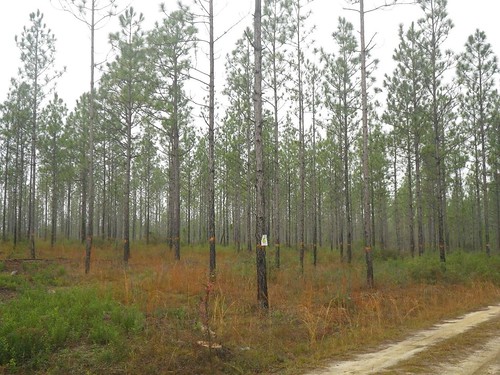
Drought, especially prolonged or severe drought, can be a major stress in forest ecosystems. Drought can kill trees directly or indirectly through insect attack or wildfire. Both of which are more likely to occur during drought.
Tree mortality impacts most of the ecosystem services provided by forests, including the amount of wood that grows, how much carbon is captured and stored, the health of critical wildlife habitat, water yield and quality, and even whether it’s safe to pursue recreational activities such as hiking or hunting.
Fortunately, there are forest management practices that can help land owners and managers continue to supply the goods and services society needs, even when forests are affected by drought. These practices focus on actions that reduce stand density (the number of trees on an acre) and adjust species composition (the species of trees and other vegetation growing on a site). Fewer trees might not necessarily use less water than more trees, but they might be healthier and better able to resist drought stress and insect attack.
Some tree species are inherently more resistant to drought and fire than others. So, by managing forest density and composition, land owners and managers help ensure that resources are available to support the growth of desired forest vegetation.
Thinning can be used to reduce stand density and adjust species composition, with the goal of reducing or mitigating drought-related stress and can improve stand resistance and resilience.
In newly planted stands, seedlings with limited root development are vulnerable to extreme drying, because their roots are too small or poorly developed to find scarce soil moisture. When drought is expected during or following planting, land owners and managers should consider using seedlings with larger root systems or appropriate “containerized” seedlings that have a plug of soil already attached to the roots.
Managing understory vegetation or controlling competition from other plant species during drought is important in established stands as well as for regeneration. For example, an open understory of grasses and legumes may better tolerate drought than a thick midstory of shrubs and small trees.
USDA Forest Service Research and Development scientists in partnership with Duke University recently published an assessment titled Effects of Drought on Forests and Rangelands in the United States: A Comprehensive Science Synthesis. The report was authored by 77 scientists from the Forest service, other federal agencies, research institutes, and universities. Find out what this report means for you with regionally specific guidance on how to manage forests in the face of drought, visit the USDA Climate Hubs web page on Forest & Rangeland Drought.


